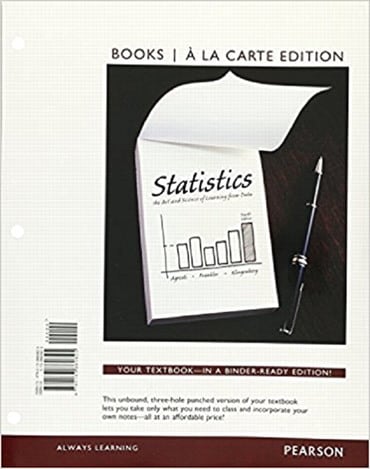Switch content of the page by the Role togglethe content would be changed according to the role

Statistics: The Art and Science of Learning from Data, 4th edition
Published by Pearson (January 7, 2016) © 2017
- Alan Agresti University of Florida
- Christine A. Franklin University of Georgia
- Bernhard Klingenberg Williams College
Loose-Leaf
$143.99
Price Reduced From: $179.99
ISBN-13: 9780133860825
Statistics: The Art and Science of Learning from Data
Published 2016
Need help? Get in touch